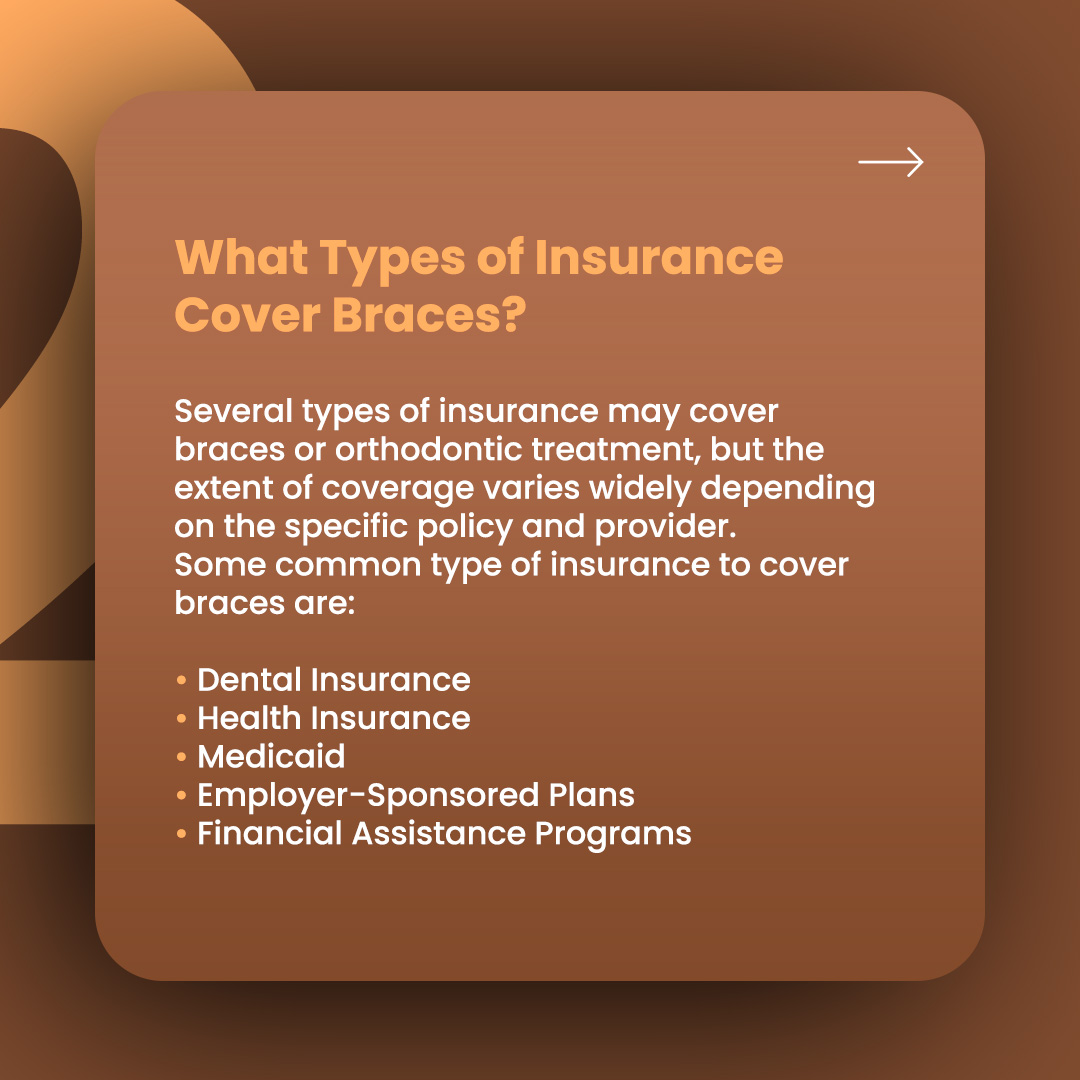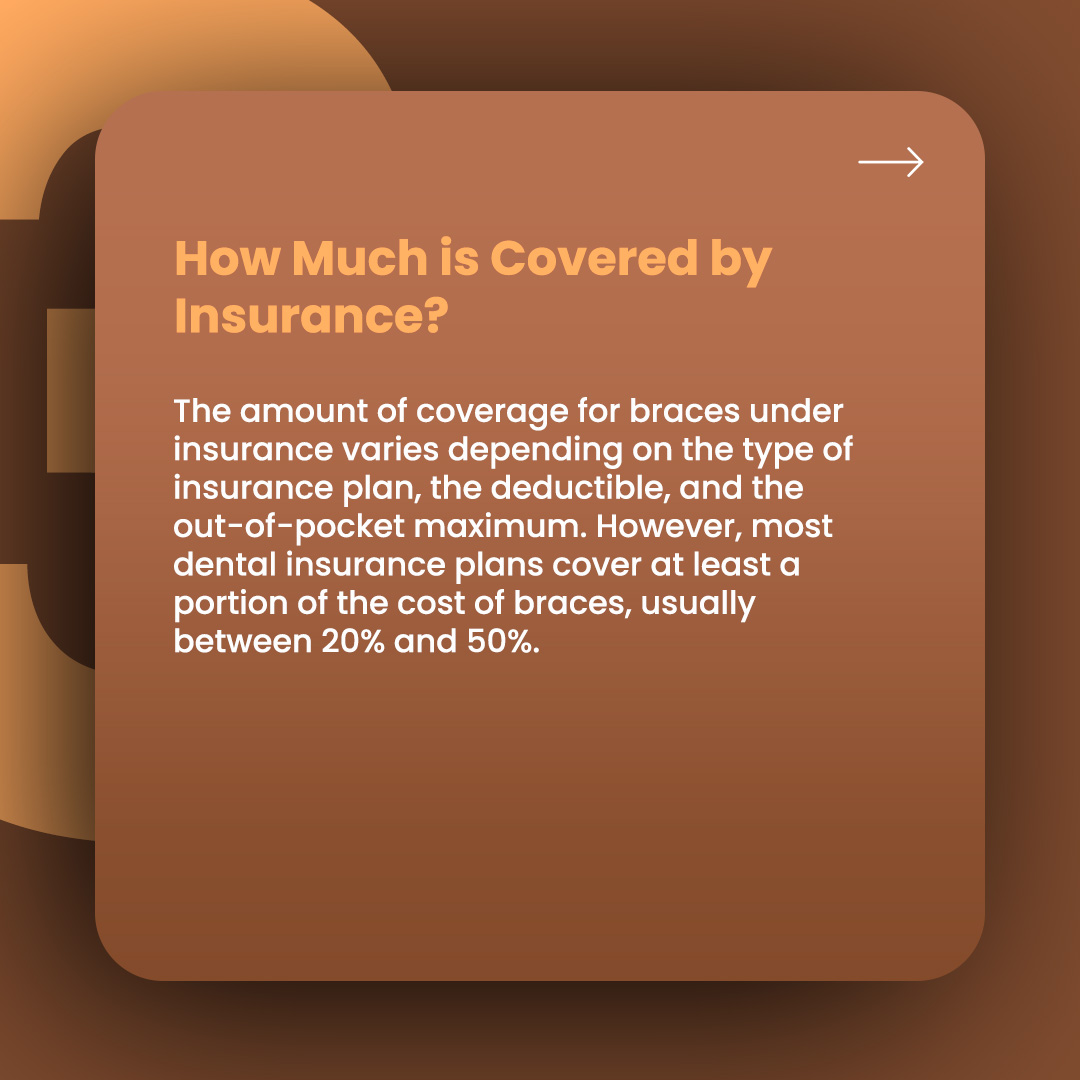While they can be expensive, many insurance plans cover the cost of braces, either partially or fully.
However, the financial aspect often raises questions.
Does insurance cover braces, and if so, to what extent?
Whether you’re a parent considering braces for your child or an adult contemplating orthodontic treatment, understanding your insurance options is crucial.
Does Insurance Cover Braces?
The coverage of braces by insurance plans can be a pivotal factor for individuals or parents considering orthodontic treatment. While dental insurance typically covers a variety of procedures, the extent of coverage for braces varies widely among different plans. It’s crucial to understand the nuances of your specific insurance policy and consider several key factors when determining whether insurance covers braces. Factors Influencing Coverage:
-
Age:
- Many insurance policies have age restrictions when it comes to orthodontic coverage. Braces are often covered for children and teenagers, but coverage might be limited or not provided at all for adults.
-
Type of Treatment:
- The type of orthodontic treatment prescribed by the orthodontist also affects coverage. Traditional braces, clear aligners, and other specialized treatments may be covered differently under insurance plans.
-
Orthodontic Need:
- Insurance companies assess the necessity of orthodontic treatment. If braces are deemed medically necessary to correct issues affecting oral health, the likelihood of coverage increases.
-
Insurance Plan:
- The specific insurance plan you have plays a significant role. Some comprehensive dental insurance plans include orthodontic coverage, while others require a separate orthodontic rider or offer limited coverage.
-
Coverage Limits:
- Even if braces are covered, insurance plans often have lifetime or annual limits on orthodontic expenses. It’s essential to understand these limits to plan for potential out-of-pocket costs.
-
Pre-authorization:
- Some insurance plans require pre-authorization before orthodontic treatment begins. Failing to obtain pre-authorization could result in reduced or denied coverage.
-
In-Network Providers:
- Insurance coverage might differ if you choose an orthodontist within your insurance network. Choosing an in-network provider can often result in higher coverage levels.
Understanding the intricacies of your insurance coverage empowers you to make informed decisions about orthodontic treatment. By being aware of the factors that influence coverage, you can navigate the process effectively, ensuring that your journey to a straighter smile is not only successful but also financially manageable.

What Types of Insurance Cover Braces?
Several types of insurance may cover braces or orthodontic treatment, but the extent of coverage varies widely depending on the specific policy and provider. Here are the common types of insurance that might cover braces:
-
Dental Insurance:
- Most dental insurance plans offer some level of coverage for braces, typically for children and adolescents. However, coverage can vary significantly depending on the specific plan and provider. Some plans may only cover a portion of the cost, while others may have limitations on the types of braces covered or the age of the patient.
-
Health Insurance:
- In rare cases, health insurance may cover braces if the treatment is deemed medically necessary to address a severe malocclusion or jaw misalignment that could lead to health problems. However, this is not common, and most health insurance plans do not consider braces as a covered benefit.
-
Medicaid:
- Medicaid, a government-funded health insurance program for low-income individuals and families, may cover braces for children if the treatment is deemed medically necessary. However, coverage varies by state, and some states may have stricter eligibility requirements or limitations on the types of braces covered.
-
Employer-Sponsored Plans:
- Some employers may offer dental or health insurance plans that include coverage for braces. These plans may have more comprehensive coverage than individual plans, but the specific benefits will depend on the employer’s plan and the insurance provider.
-
Financial Assistance Programs:
- Various non-profit organizations and dental clinics offer financial assistance programs to help individuals with limited financial means afford braces. These programs may provide grants, loans, or reduced-fee treatment options.
It’s crucial to thoroughly review the terms and conditions of any insurance policy to understand the coverage limitations, age restrictions, pre-authorization requirements, and other relevant details. Additionally, consulting directly with the insurance provider or the orthodontic office can provide specific and accurate information regarding coverage for braces under a particular insurance plan.

How Much Is Covered By Insurance?
The amount of coverage for braces under insurance varies depending on the type of insurance plan, the deductible, and the out-of-pocket maximum. However, most dental insurance plans cover at least a portion of the cost of braces, usually between 20% and 50%.
For example, if the total cost of braces is $5,000 and your insurance plan covers 50%, you would be responsible for paying $2,500 out of pocket. The other $2,500 would be covered by your insurance company.
Some dental insurance plans also have lifetime maximums for orthodontic benefits. This means that there is a cap on the total amount of money that your insurance company will pay for braces over your lifetime.
If you have Medicaid or Medicare, your coverage for braces will vary depending on your state and your individual circumstances. Medicaid generally covers braces for children if they are medically necessary, but coverage for adults varies from state to state. Medicare does not cover braces, except in very limited cases.
How to find out how much your insurance covers for braces
To find out how much your insurance covers for braces, contact your insurance company. You can usually find this information on your insurance company’s website or in your policy documents. You can also ask your dentist or orthodontist for help.
Tips for getting the most out of your insurance coverage
Here are a few tips for getting the most out of your insurance coverage for braces:
- Make sure your dentist or orthodontist is in-network. If you go to an in-network dentist or orthodontist, you will typically pay less out of pocket.
- Get pre-authorization from your insurance company before starting treatment. This will help to ensure that your treatment is covered by your insurance plan.
Keep track of your receipts and dental records. This will make it easier to file claims with your insurance company.

Will My Insurance Cover Invisalign?
Whether your insurance covers Invisalign treatment depends on your specific dental insurance policy. In recent years, many dental insurance plans have started to include coverage for clear aligner treatments like Invisalign, recognizing them as effective orthodontic solutions. However, the coverage details can vary widely from one insurance plan to another.
Here are a few important points to consider regarding Invisalign coverage:
-
In-Network Providers:
- If your insurance plan covers Invisalign, choosing an orthodontist who is in-network with your insurance provider can often result in higher coverage levels. In-network providers have negotiated rates with the insurance company, potentially reducing your out-of-pocket costs.
-
Orthodontic Coverage:
- Check your insurance policy documents or contact your insurance provider to determine if orthodontic treatments, including Invisalign, are covered. Some dental insurance plans include orthodontic coverage, while others require a separate orthodontic rider or offer limited coverage.
-
Medical Necessity:
- Insurance companies assess the medical necessity of orthodontic treatments. If Invisalign is prescribed to address a condition that significantly affects oral health, there’s a higher chance of coverage. The orthodontist can provide documentation to support the medical necessity of the treatment.
-
Percentage of Coverage:
- If your insurance covers Invisalign, it typically pays a percentage of the total cost. The exact percentage varies based on the insurance policy and can range from 50% to 80% of the treatment cost.
-
Lifetime or Annual Maximum:
- Be aware of any lifetime or annual maximum limit on orthodontic coverage. Once this limit is reached, the insurance company will not cover additional orthodontic expenses, regardless of the type of treatment.
-
Pre-authorization and Waiting Periods:
- Some insurance plans require pre-authorization before starting Invisalign treatment. Additionally, there might be waiting periods before orthodontic procedures, including Invisalign, are covered.
It’s crucial to thoroughly review your insurance policy documents and, if necessary, consult directly with your insurance provider to understand the specifics of your Invisalign coverage. Additionally, discuss your treatment plan with both the orthodontist and the insurance provider to ensure a clear understanding of the costs and the portion covered by insurance. Being well-informed allows you to plan your orthodontic treatment effectively and manage any potential out-of-pocket expenses.

There are also a number of financial assistance options available to help cover the cost of braces, including grants, loans, and payment plans. If you wish to talk to one of our agents today, contact us now!
I am a professional content writer specializing in the health insurance field. My work primarily focuses on simplifying the complexities of healthcare coverage, aiming to provide clarity and insight into an often confusing subject. Empowering people to make informed decisions about their well-being is my passion. At Apollo Health Insurance, we share that commitment. Apollo Health Insurance stands at the forefront of securing the best healthcare coverage for individuals, ensuring affordability without compromising on quality.








